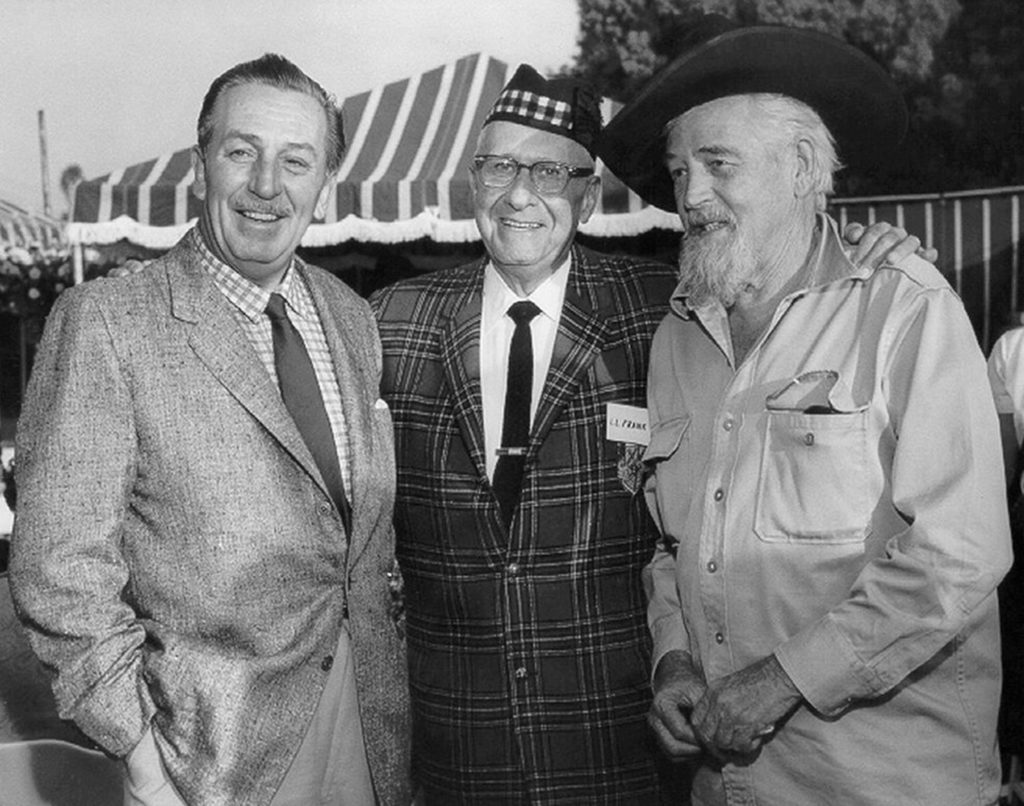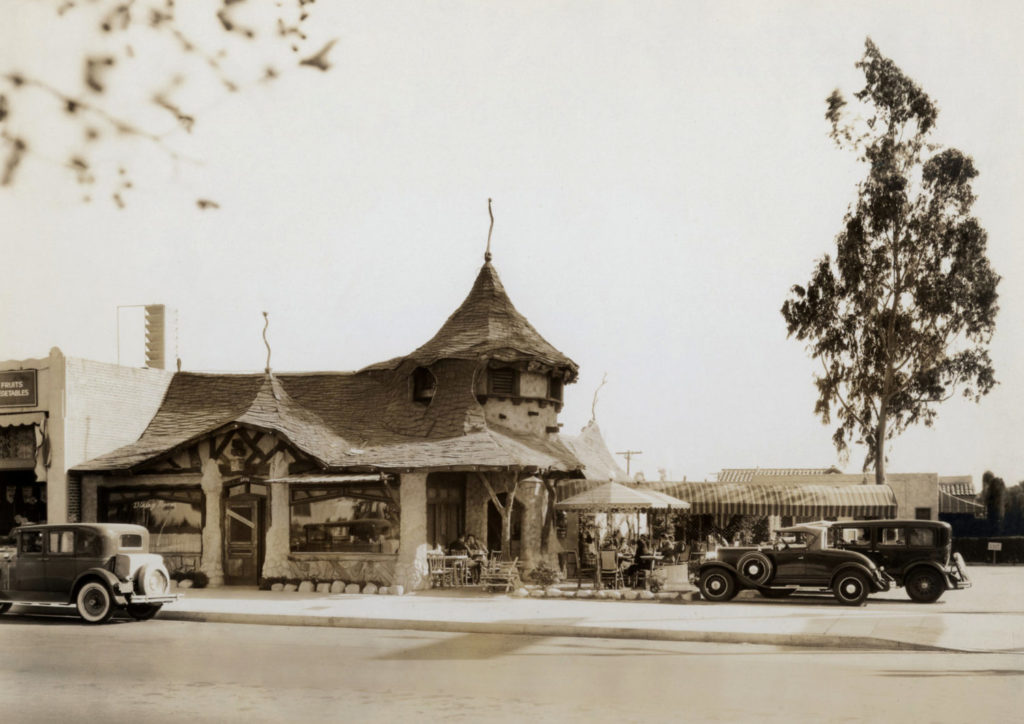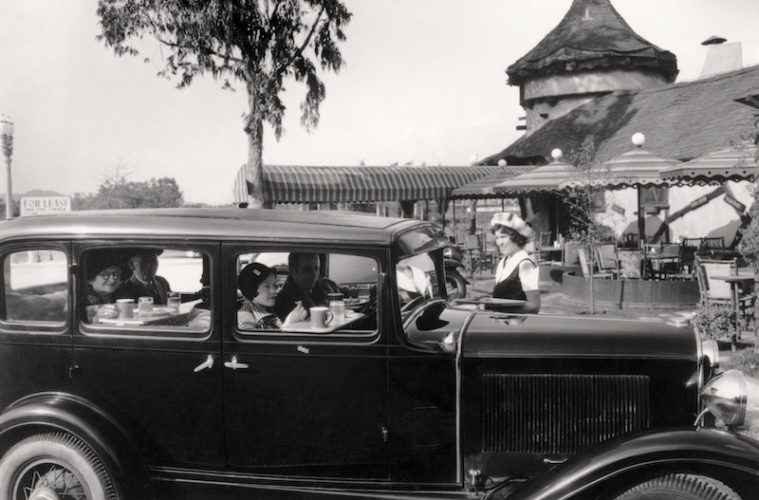In 1906, brothers-in-law Walter Van de Kamp and Lawrence Frank opened a Dutch potato chip stand at the corner of Seventh and Grand in what we now know as downtown Los Angeles, where the main metro station currently sits. It would be about another 20 years before this wild west town would see a city hall.
Then around 1919, they met a fast-talking real estate agent who suggested that because movie studios were starting to pop up in Los Feliz, like the Walt Disney studio on Hyperion and Griffith Park where everybody was filming Westerns, they should set up shop there because it was going to become downtown Los Angeles. Los Feliz Boulevard was a dirt road.
“So the brothers-in-law took his advice and opened a roadside stand on that spot in 1922 and called it Tam O’Shanter,” says the restaurant’s current general manager John Lindquist, who lovingly tells the story of one of L.A.’s oldest restaurants. “They sold potato chips, hot dogs and hamburgers. It may have been a dirt road, but it was a busy thoroughfare from the studios to Los Angeles.”
From there, they grew. Walt Disney built his studio on Hyperion in the 1930s, but it didn’t include a commissary, so there was no place to eat. Tam O’Shanter was the only viable restaurant in the area, so he would come for lunch every day, five days a week. He introduced Frank and Van de Kamp to Hollywood set designer Harry Oliver.
“The brothers and business partners had fallen in love with the Scottish countryside and wanted to do a themed restaurant that looked like a Scottish country manner,” Lindquist tells the story. “Harry Oliver said, ‘I can design that.’ So he did the first designs of the restaurant. The original turret that you now see from the Los Feliz side was part of the original building. Because Disney came here every day, so did the animators. They sketched the building and that became Snow White’s house. If you look at pictures of the original building and Snow White’s house in the 1937 Disney film, you’ll see it.”

Walt Disney from left, Lawrence Frank and Harry Oliver.(Courtesy Tam O’Shanter)
That same year, when Snow White debuted in theaters, in a little test kitchen in the back of Tam O’Shanters, which now serves as the liquor room, the first patch of Lawry’s seasoned salt was born, and in 1938, the partners opened Lawry’s The Prime Rib in Beverly Hills with a strict dress code. The family sold the seasoning to Lipton in 1979.
By the 1960s, the Tam was a hash house, a diner. It served breakfast, lunch and dinner with an open counter and the kitchen behind it. They changed the name briefly to The Great Scott, and took away the counter and underwent a facelift. In July, it will be 100 years since the dusty roadside stop welcomed wayfarers .
The Tam O’Shanter has remained in the family, now owned by fourth generation Ryan O’Melveny Wilson, CEO of Lawry’s Restaurants Inc. and great-grandson of Lawrence Frank. A passionate chef by training who spent years in the Tam’s kitchen as a dishwasher and prep cook, Wilson now oversees the entire family operation that includes five restaurants domestically stretching to Orange County with the Five Crowns and Side Door, as well as seven licenses of Lawry’s The Prime Rib in Asia.
On an average night, the Tam goes through about 10 to 15 full rib roasts, 25 on a cranking busy night. Lawry’s does more in the neighborhood of 80 a night, with 90% of the guests ordering prime rib. The potato chips, using the same 1906 recipe, are still on the Tam menu, cut the same way, fried in the same type of oil.

1930s exterior patio (Courtesy Tam O’Shanter)
“One of my favorite memories of the Tam O’Shanter is that it was one of the first restaurants I cooked in professionally,” Wilson tells L.A. Weekly. “I worked every Wednesday and Friday night on the line, and learned how a professional kitchen functions, and it gave me my first taste of a career that I am very passionate about. I learned some good habits there and a few bad habits.”
“It’s tremendously important to keep these iconic restaurants alive,” he says. “It is one of the many fabrics of our community. There are so many daily pressures on our lives and the idea of being able to come into a restaurant like the Tam O’Shanter, the quintessential public house that’s accessible to all, is important. Far too often, restaurants are distant and expensive, and people feel they’re not attainable on a regular basis.”
Bartender Enrique Rosas oversees the selection of 665 different whiskeys and has been at the Tam for more than 40 years. He has taken over the role of longest-standing bartender at an L.A. location since the passing of Musso & Frank’s Ruben Rueda.
“On a spectrum, there are two approaches to restaurants,” says Wilson, whose business has survived two world wars and the last major gas crisis. “You’re either trying to have something with generational staying power or you’re operating much like a nightclub, where it’s a very specific time period. You’re trading off what’s super trendy at the moment or a great real estate play. You’re going to operate for three to five years and you’re out. I’m concerned with people’s ever-diminishing attention span and the challenge of running restaurants in California, and chef culture, always wanting something fresh and new and hip in that celebrity craze, rather than fundamentally just offering a good dining experience. The key to the longevity of our business is a commitment to our coworkers and treating everyone fairly. There’s no nepotism here, and we spent a lot of time making sure this is a great place to work in an industry that is difficult, challenging and physically demanding. We’ve been here for 100 years and look forward to continuing the tradition of celebrating all of life’s moments.”

Los Feliz Blvd. 1925-26 (Courtesy Tam O’Shanter)
Advertising disclosure: We may receive compensation for some of the links in our stories. Thank you for supporting LA Weekly and our advertisers.

